Choosing the best AI visibility products for generative engine optimization has quickly become mission-critical for SEO, content marketers, and brand teams. As generative AI engines like ChatGPT, Claude, Perplexity, and Google AI Overviews reshape search visibility, brands need GEO tools that monitor mentions, optimize content strategy, and track AI-generated answers. This guide highlights seven leading platforms to strengthen your AI presence and boost brand visibility across multiple AI platforms.
Quick Answer (TL;DR)
The best AI visibility products with generative engine optimization include AIclicks, Profound, and AthenaHQ for tracking brand mentions and AI responses in real time. Other strong tools like Utterly, Scrunch, Writesonic, Peec AI, and Rankscale deliver GEO-focused insights, helping brands to optimize content, monitor AI-driven search results, and manage digital presence across major AI platforms.
1. AIclicks
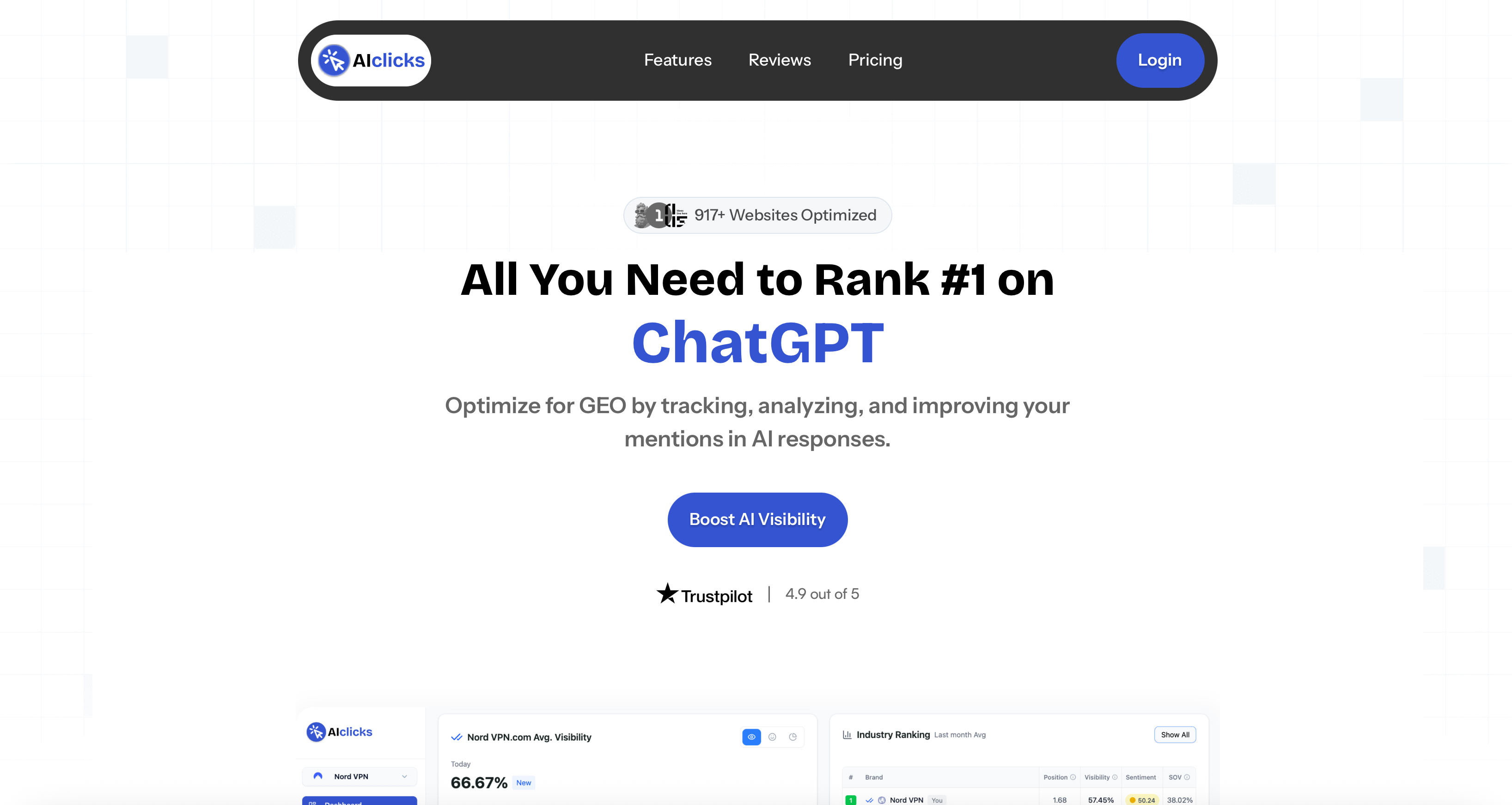
AIclicks is a dedicated platform built around tracking visibility across LLMs and helping brands rank in AI-generated search results. Their offering includes prompt tracking, response monitoring, competitor analysis, and content recommendations, all targeting generative engine optimization (GEO).
AIclicks monitors brand performance across ChatGPT, Perplexity, Gemini, and track metrics such as AI search visibility, prompt coverage, competitor presence, and content gaps. They also include a Response Tracker (showing how your brand is mentioned in different AI answers) and Competitor Analysis to see who dominates certain queries.
The platform supports analytics, giving insights into monthly visits, tracked prompts, and how many responses your brand appears in across generative engines. AIclicks emphasizes helping brands “rank first in AI search results” by improving how their content, mentions, and structured data are surfaced in AI responses.
Response & Prompt Monitoring
AIclicks’ Response Tracker shows the actual AI-generated answers where your brand is cited. You can see which prompts trigger mentions and how your content is used by generative models. Combined with prompt performance data, this gives actionable feedback about which queries and content adjustments yield better AI presence.
2. Profound
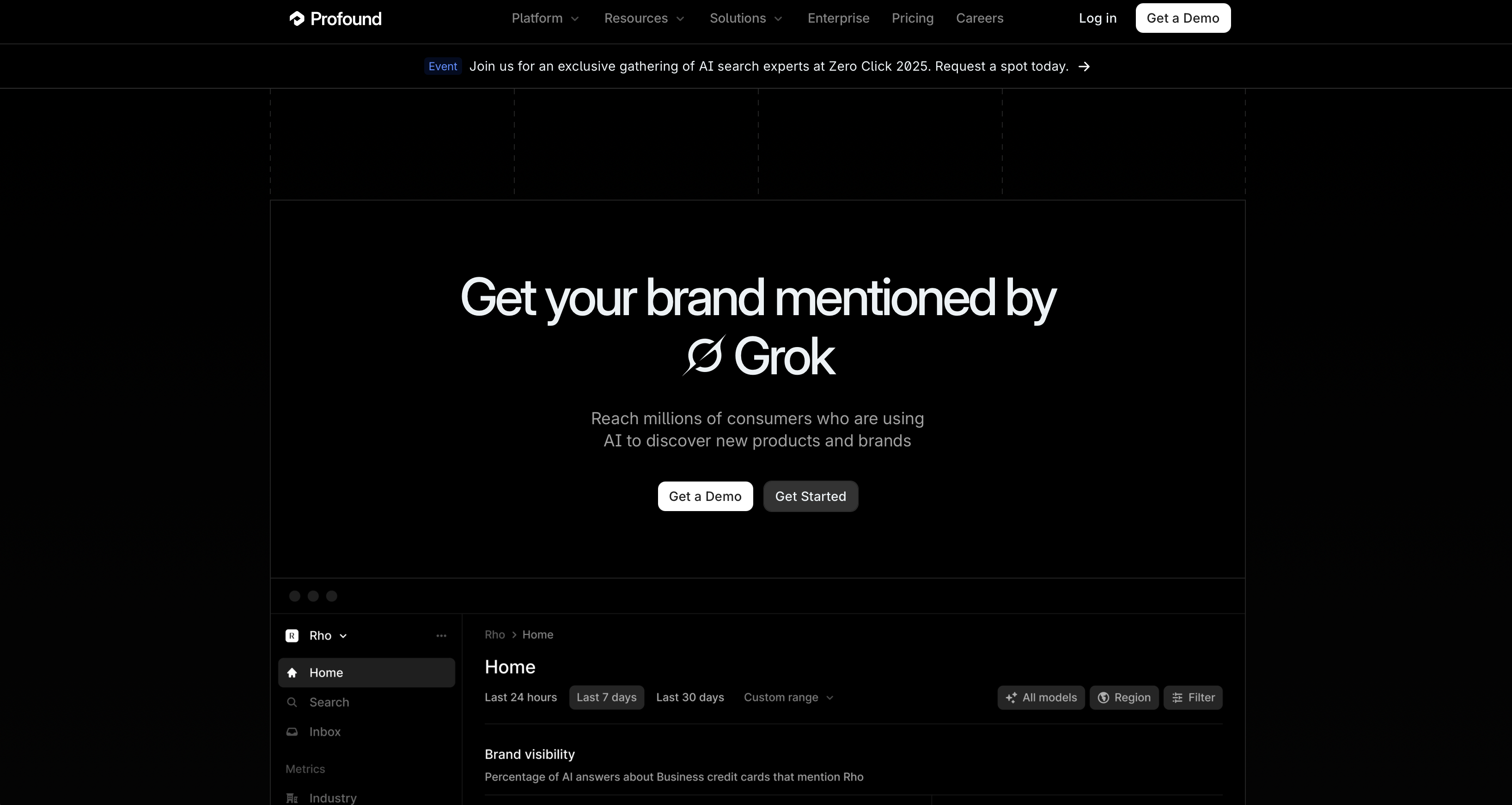
Profound positions itself as one of the most advanced tools for tracking how a brand appears in generative search environments. Its platform helps marketing teams measure AI visibility, uncover brand mentions, and analyze when and where content is cited in AI-generated responses across ChatGPT, Claude, Perplexity, and Google AI Overviews.
The tool is particularly strong for ecommerce and digital brands looking to tie AI generated answers to practical business outcomes, including referral traffic and visibility scoring. By aligning insights with structured data and user intent, Profound supports teams in building GEO strategies that connect AI responses with search visibility and traditional SEO efforts.
AI Mention & Shopping Visibility
Profound provides AI mention tracking that shows how brands and products appear in answer engines and ChatGPT Shopping features. This helps businesses monitor AI responses in real time, uncover brand presence in AI generated content, and identify opportunities to optimize content strategy and structured data for improved visibility.
3. AthenaHQ
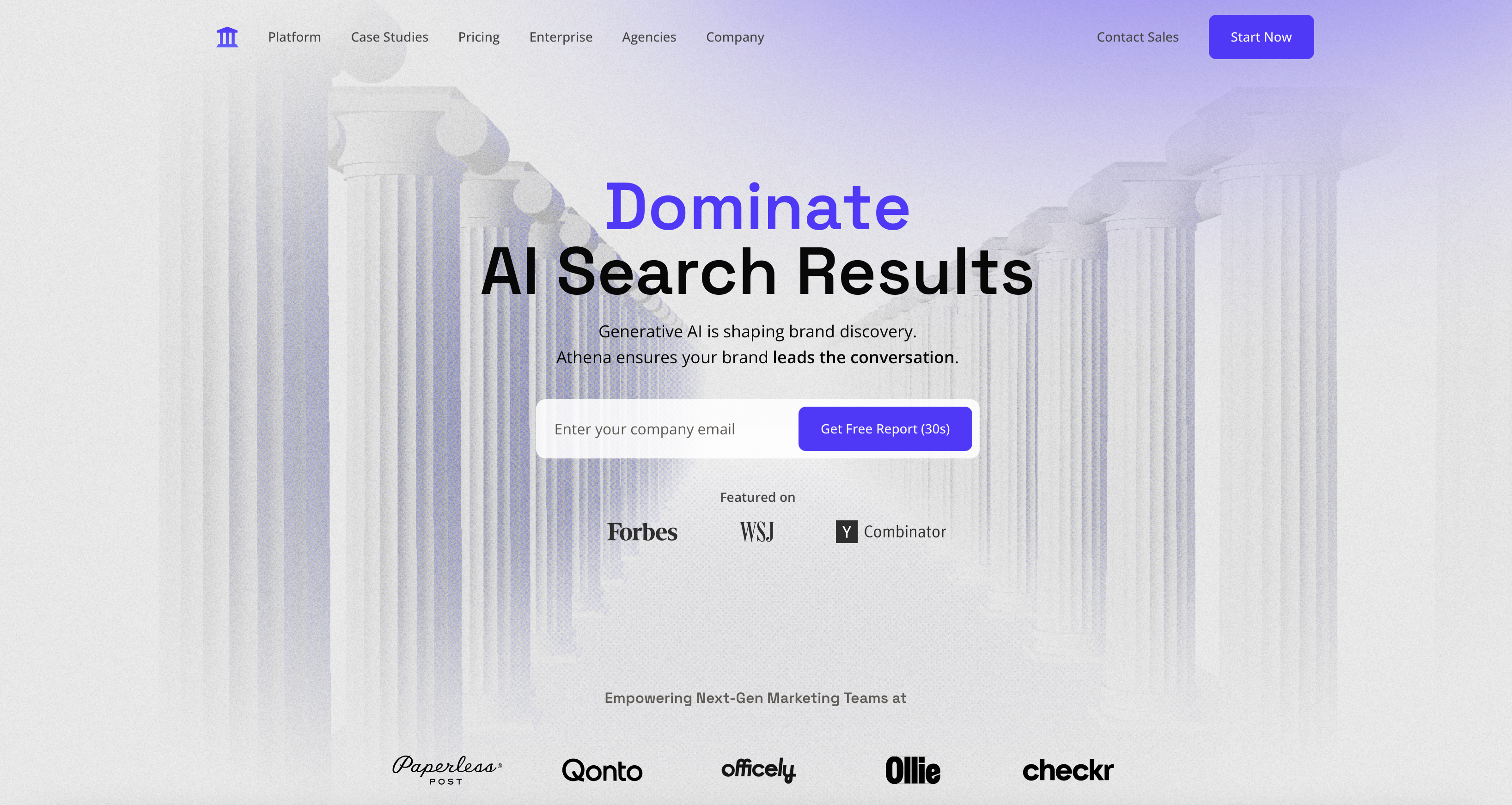
AthenaHQ is built as a research engine analyzer, designed to help marketers reverse-engineer how AI models cluster topics, brands, and answers. For teams experimenting with generative search environments, AthenaHQ highlights the content clusters most likely to appear in AI-generated responses, making it a useful tool for refining keyword research and content strategy.
By surfacing insights into how large language models (LLMs) organize user queries, AthenaHQ provides a roadmap for brands to fine tune their content strategy. Marketing teams can align their structured data, optimize high intent content, and adapt to changes in AI search systems.
AI Topic Maps
AthenaHQ generates AI Topic Maps that illustrate how content is grouped within AI engines. These maps help identify relevant keywords, ranking factors, and overlapping entities that AI search engines use to generate answers. For brands, this provides a clear picture of where they fit within AI powered search tools and where adjustments in optimizing content are needed.
4. Otterly
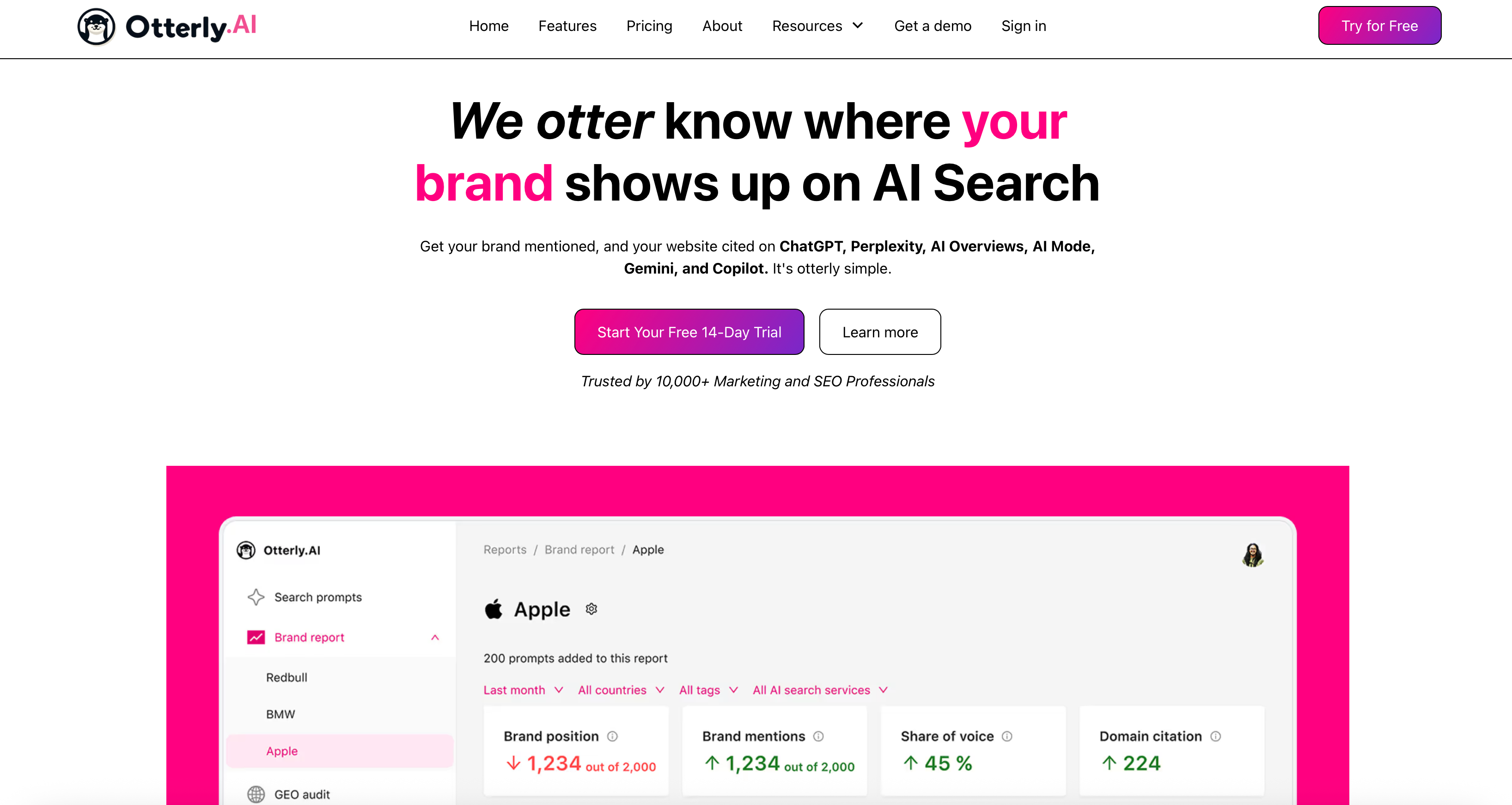
Otterly specializes in real-time brand mention monitoring across multiple AI systems. This makes it especially useful for agencies handling several clients, verticals, or fast-moving campaigns. The platform helps marketing teams understand how their brand appears in AI responses, tracking changes as user queries evolve.
By focusing on brand mention monitoring and evolving AI citations, Otterly gives SEO specialists and digital marketers the tools to measure AI search visibility and keep content aligned with user intent.
Explore our SEO reputation management services.
Live GPT Query Watch
Otterly’s analyzer helps track which prompts position your brand in AI responses and how often citations are included. This feature is especially useful for agencies managing multiple clients, enabling them to identify high-value queries, monitor AI search visibility over time, and adjust content strategy for stronger placement in AI-generated responses.
5. Scrunch
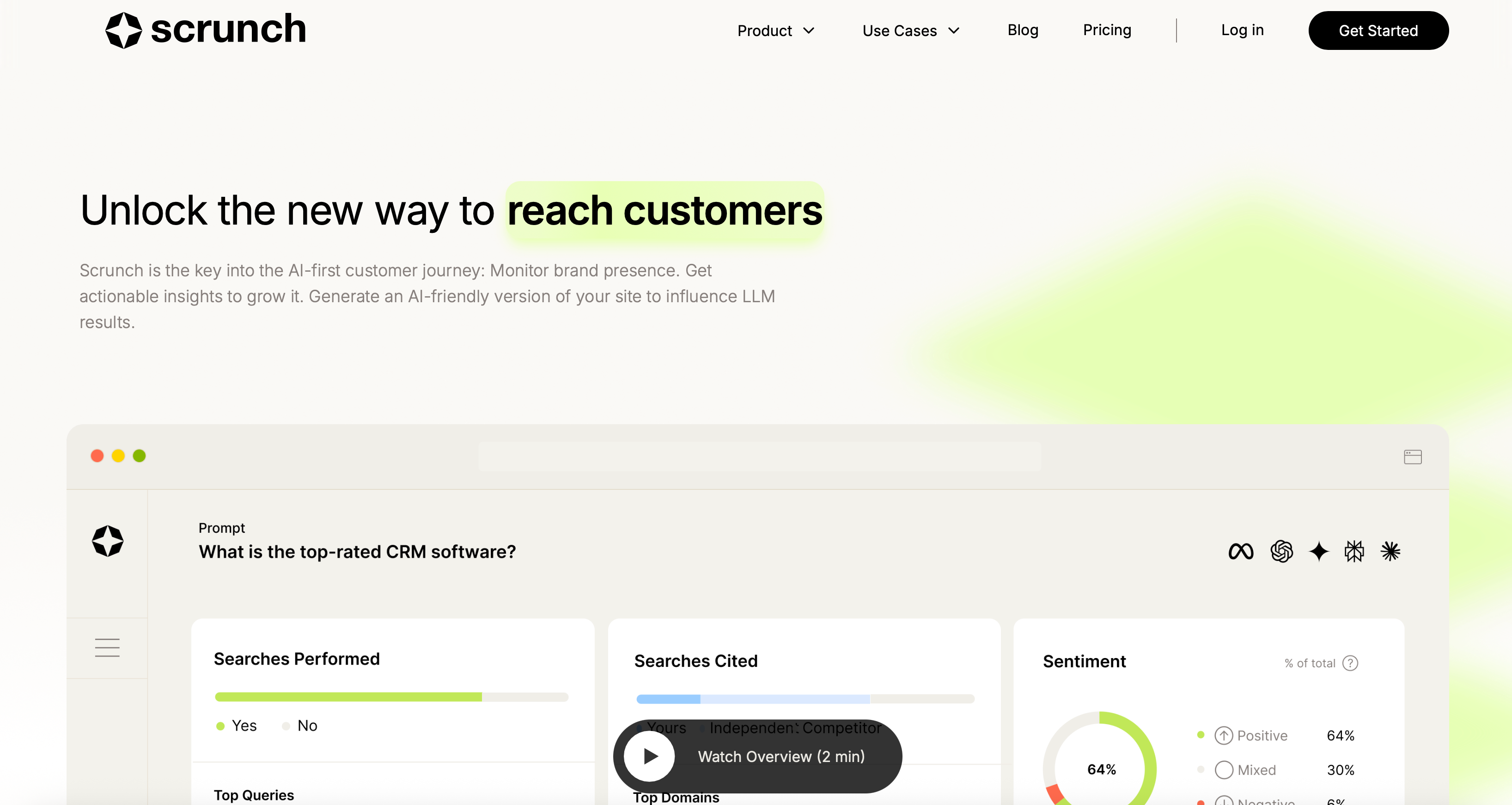
Scrunch is a GEO tool that focuses on testing and measuring prompt outcomes across AI engines. It’s widely adopted by e-commerce brands, PR teams, and SEO specialists who want to understand how specific user queries and search algorithms influence brand presence in ai generated search results.
The tool’s strength lies in its ability to compare key features of prompts, helping teams analyze which phrases and content structures drive more mentions in AI systems.
Prompt Position Analyzer
Scrunch allows marketing teams to experiment with different campaign messaging and analyze which versions generate stronger audience response. While originally designed for influencer and PR performance, this same approach applies to AI-powered search tools, where small variations in phrasing can impact whether a brand appears in AI-generated answers or not. Marketers can use these insights to fine-tune their content strategy, improve brand visibility, and strengthen their positioning in generative search environments.
6. Writesonic
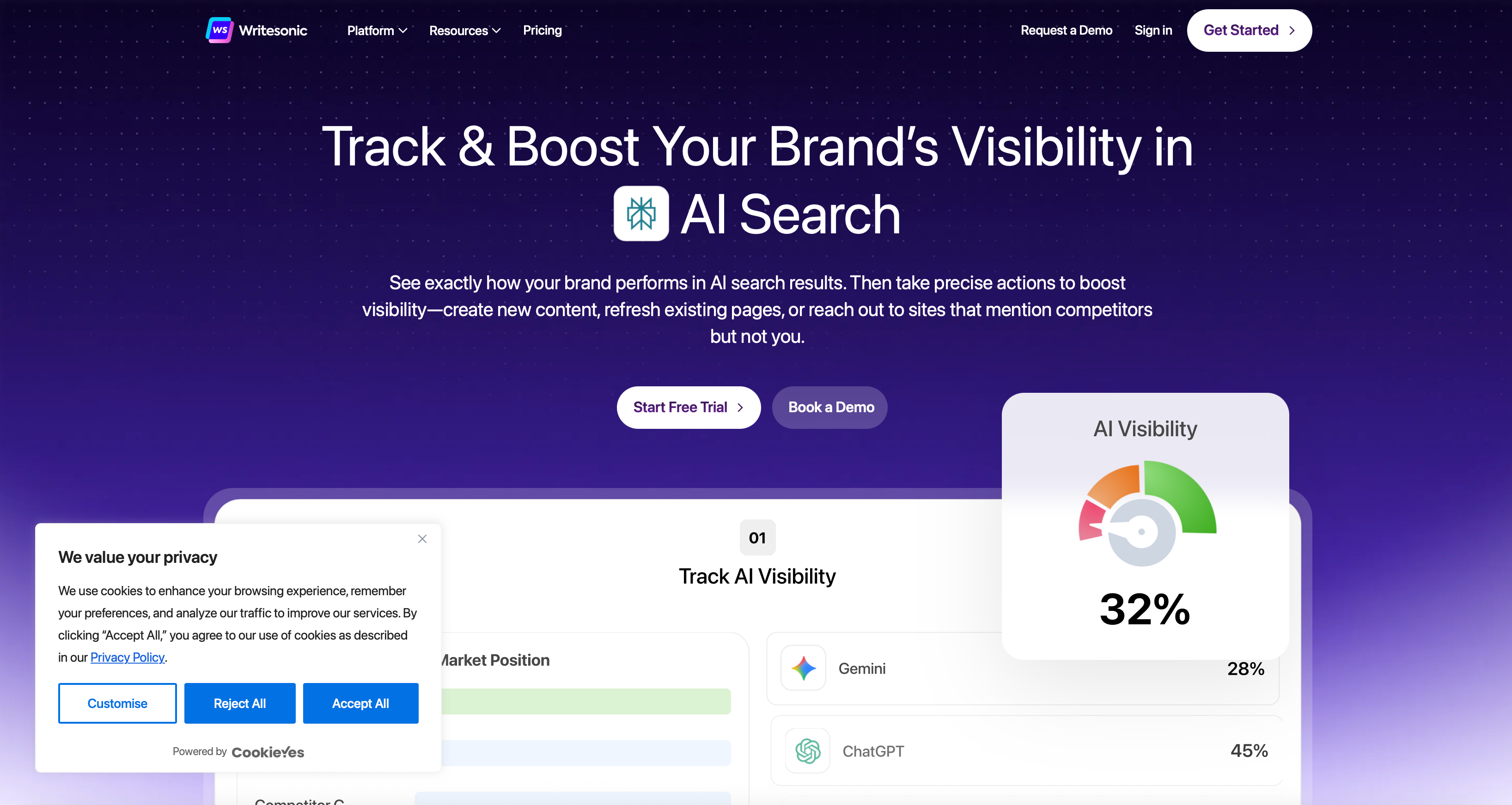
Writesonic is an AI-powered content creation platform that helps brands scale AI-generated content aligned with SEO strategy and brand presence. The platform is designed for AI-powered search tools, offering integrations that support structured workflows, content optimization, and publishing across multiple channels.
For marketers seeking consistent brand visibility across AI engines and traditional search engines, Writesonic delivers tools to maintain voice, optimize for AI answers, and strengthen structured data.
Brand-Trained Generative Content
Writesonic enables teams to build brand-trained content models, ensuring that AI-generated responses align with the company’s tone and identity. This is critical for maintaining credibility in AI-driven search results and AI indexing, where content strategy must blend SEO principles with AI users expectations.
7. Peec AI
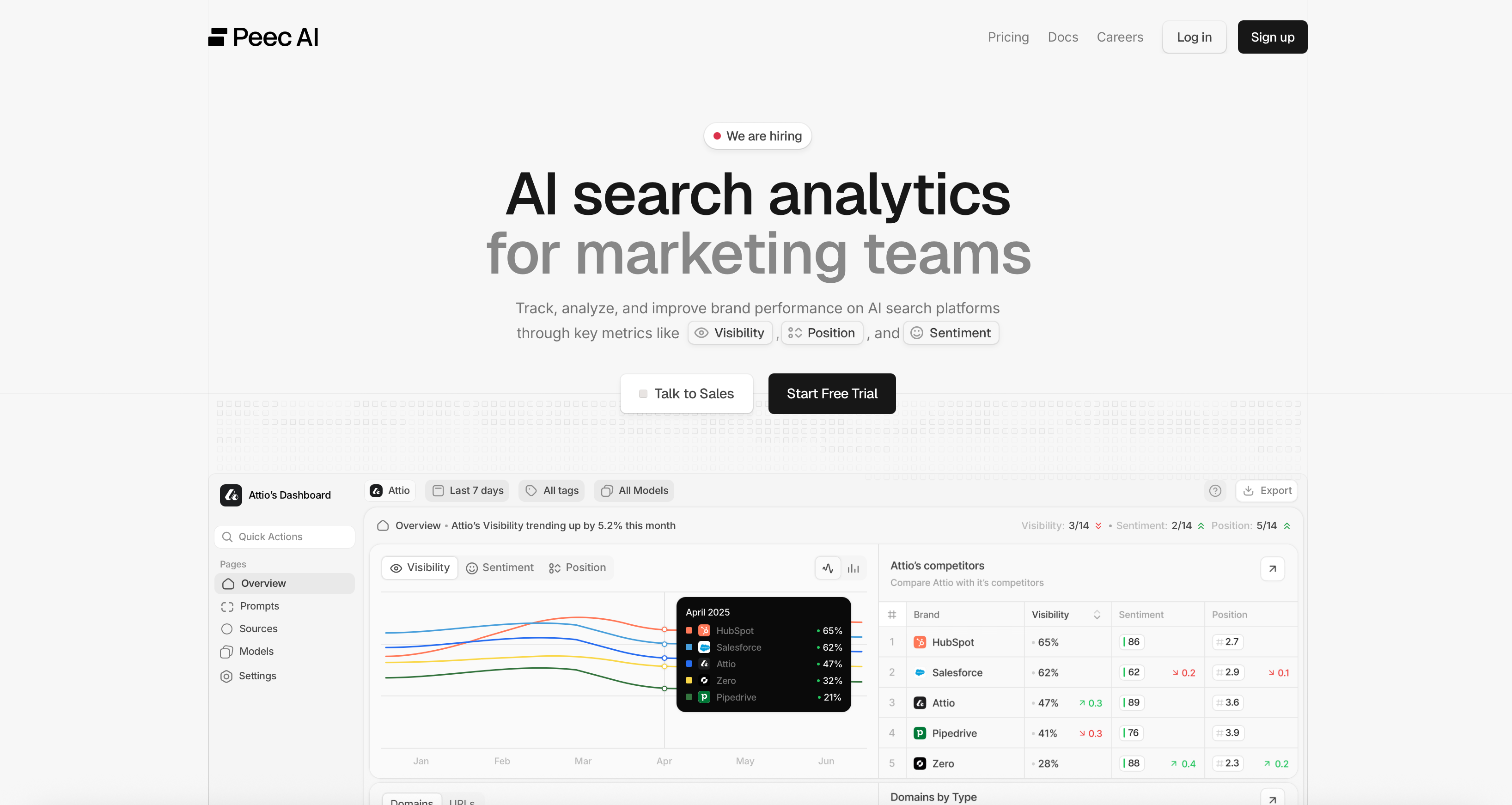
Peec AI functions as a feedback loop for AI visibility, tracking how AI engines present your brand in AI-generated responses. Its dashboards provide visibility scores that highlight brand mentions and measure sentiment, making it easier for marketing teams to adapt content strategy.
By integrating AI visibility tracking with search visibility, Peec AI bridges traditional SEO and generative engine optimization tools, offering insights into both search results and ai powered search environments.
AI Sentiment Heatmaps
Peec AI includes AI Sentiment Heatmaps that illustrate how ai responses portray a brand’s tone. This helps companies understand whether their AI presence is positive, neutral, or negative, and adjust content strategy, structured data, or messaging to fine tune digital presence across multiple AI platforms.
8. Rankscale
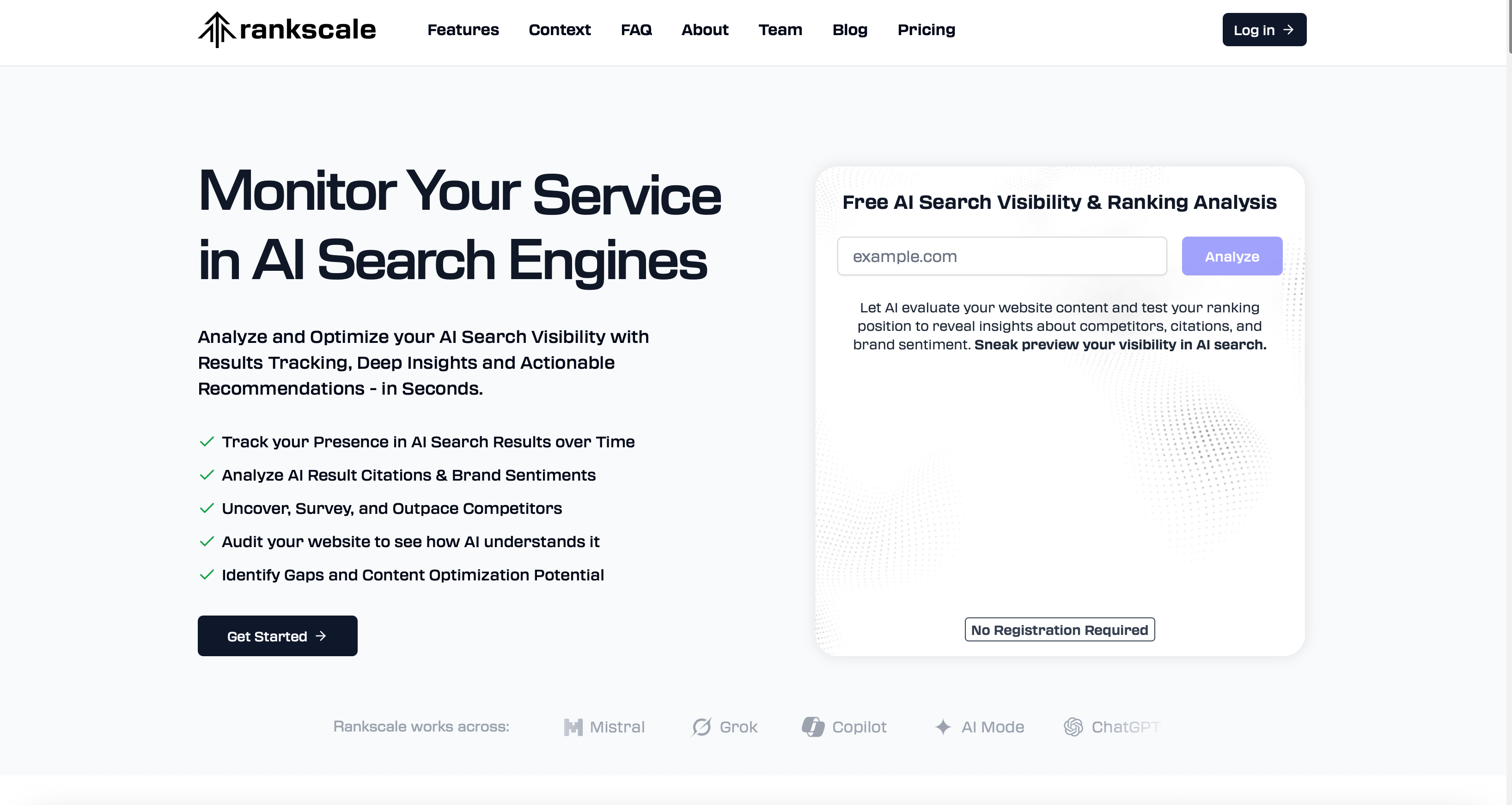
Rankscale focuses on benchmarking AI search visibility across multiple AI systems over time. This makes it a valuable GEO tool for brands that want to track competitive performance and measure how often they appear in ai generated answers compared to rivals.
Its analytics allow teams to map measurable outcomes from GEO strategy, ensuring that AI search results can be tied to growth and digital presence metrics.
Generative SERP Monitoring
Rankscale’s generative SERP monitoring tool reveals how frequently a brand appears in AI answer engines and generative search environments. This helps teams benchmark their brand’s ai visibility alongside competitors, offering insight into both traditional search volume and ai driven search results.
Frequently Asked Questions (FAQs)
What is generative engine optimization?
Generative engine optimization (GEO) is the process of tuning content for AI search engines so that it is included in AI-generated answers, AI-generated search results, and answer engines, complementing traditional SEO.
How do AI tools choose which brands to recommend?
AI platforms select brands using structured data, keyword research, user intent, and AI training data from content. Optimizing content with schema markup, clear site structure, and high intent content improves selection.
How can I check if my brand is mentioned in ChatGPT?
Using tools like Profound or Otterly, you can monitor brand mentions and AI visibility tracking across major AI platforms such as ChatGPT, Claude, and Perplexity, along with Google AI Overviews.
Do I need multiple tools for AI visibility?
Yes. Different GEO tools cover various aspects of generative engine optimization: some specialize in brand mention monitoring, others in optimizing content or tracking AI citations. Combining tools improves brand presence across multiple AI platforms.
